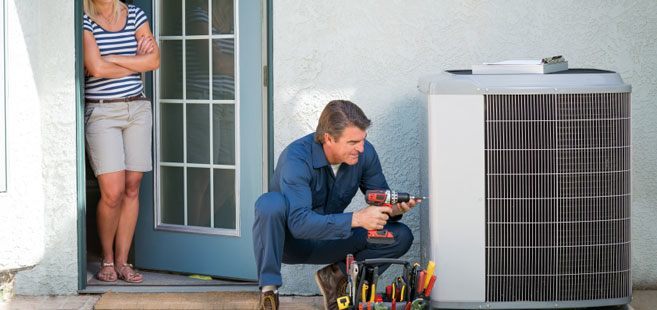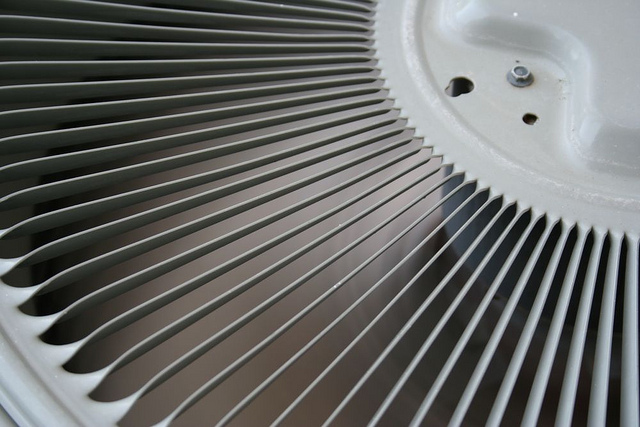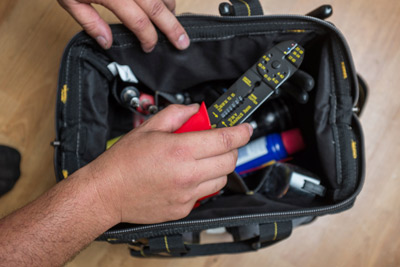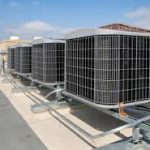Unsure if your water heater is just on the fritz or burned out all together? Here are some tips to help you troubleshoot your water heater.
Water Heaters 101
There are two types of conventional water heaters, gas and electric. An electric water heater can be used almost anywhere. A gas water heater is most likely to be installed in a home that already uses gas for another appliance such as a furnace or stove. Building codes may dictate the placement of gas water heaters, restricting them to areas outside of normal home activity.
It is likely if you are replacing a water heater, you’ll simply replace it with the same type of unit that was already there. However, there are upgrade possibilities that should be considered. For example: if space allows, you may choose to increase the unit’s holding capacity to accommodate your growing family. Another important consideration is the unit’s energy efficiency. Replacement time is the perfect time to lower your energy bill by choosing a water heater that is more energy efficient.
When looking for a water heater, consider these features:
- Gallon capacity (40-gallon and 50-gallon heaters are most common)
- Recovery rate (the number of gallons the heater will heat in an hour)
- Dimensions (width and height — physical space may limit your ability to upgrade your unit’s capacity — will the heater fit in the space you have for it?)
- The energy efficiency rating (a sticker on the side should list the estimated annual cost of operation for the unit)
Before making any repairs or purchasing a new water heater, check the nameplate on the side of your current unit. Here you will find helpful information including the tank capacity, insulation R-value, installation guidelines, working pressure, model and serial number. If you have an electric water heater, the nameplate will also list the wattage capacity and voltage of the heating elements.
This information will serve as the starting point in your search for replacement parts, or a complete replacement unit. For an overview on the types of water heaters available, read our Water Heater Buying Guide.
Caution
If you choose to replace an electric unit for a gas unit-or vice versa — bring in a professional to do the job. Installing or removing gas lines is not a project for the DIYer.
Repair or Replace
The water heater gets quite a workout in most homes. Based on manufacturer’s suggested service life, the life expectancy of a water heater is about 8 to 12 years. That, of course, will vary with the severity of local weather, the unit design, quality of installation and the level of maintenance your unit has received.
If your water heater is more than 10 years old, leaks around the base of the tank, and / or works erratically or not at all, it probably needs to be replaced. In any case, make sure that an electrical problem such as a blown fuse or tripped breaker is not the reason for the unit’s failure.
Common Problems
Perhaps the most common problem connected with a water heater is water that isn’t as hot as you want it to be. This is usually caused by a faulty thermostat or a defective heating element.
Here are some basic steps to follow when your water is not hot enough:
Electric water heater
- Make sure that the power is connected. Reset the thermostat.
- Flush the heater to remove sediment from the tank.
- Insulate the hot water pipes.
- Replace the heating element or thermostat.
- Raise the temperature setting on the thermostat.
Gas water heater
- Make sure that the gas is connected and the pilot light is lit.
- Flush the heater to remove sediment from the tank.
- Insulate the hot water pipes.
- Clean the gas burner and replace the thermocoupler (a safety device that shuts off the gas automatically if the pilot flame goes out).
- Raise the temperature setting on the thermostat.
Other common problems and possible solutions
- Hissing or sizzling noises: Sediment may have collected in the tank. Drain the tank until the water clears. Soak elements in vinegar and scrape collected scale.
- Leaking pressure-relief valve: Replace valve.
- Leaking water supply pipes: Tighten the fittings. If that doesn’t work, shut off the water and replace the fittings.
When Replacement is Necessary
If you are handy with tools, you might want to consider replacing your water heater yourself. For a direct replacement, installation is straightforward. Essentially, this involves putting the new unit in just like the old one came out, including the connection of supply water lines and electricity to the new unit. Masking tape is useful for marking water lines and electrical wires. Follow the manufacturer’s instructions for your unit.
Be aware that it may be necessary to add threaded fittings (if they are not there already) to the ends of the existing pipes so you can connect them to the new water heater with the appropriate supply lines. If you have copper pipes, this will require “sweating” (soldering) the fittings to the pipes. If your pipes are rigid plastic (CPVC) you can add them by solvent welding. Flexible plastic pipes will require the installation of compression fittings attached with a wrench.
Consider these questions as you decide whether you want to tackle the job:
- How will you get rid of your old water heater? Call for local codes governing disposal of such appliances. (Lowe’s offers prompt delivery to your site, and with any paid water heater delivery, we will dispose of the old water heater for you.)
- Will you be able to physically handle the unit? Water heaters are bulky and heavy. You’ll appreciate having some help.
- Do you have the tools necessary to do the job? The necessary tools are basic, but you will need adjustable wrenches, screwdrivers, a hacksaw and some good pliers. You may also need a propane torch if your installation uses copper pipe.
- Do you have time to do the job? Replacing a water heater is not something you can do bit by bit. You must have heated water, so once you start, you’ll have to finish.
For detailed steps on how to replace or install a water heater, read our Install an Electric Water Heater and Install a Gas Water Heater articles.
Caution
If you intend to convert from electric to gas or vice-versa, or if you don’t feel completely comfortable, have a professional do the job.
Water Heater Maintenance
Today’s water heaters are manufactured to require little or no maintenance, but – as is the case with almost any appliance – many problems can be avoided with routine upkeep.
Here are some maintenance tips that could prolong the life of your water heater:
- Drain the water heater twice a year to rid it of collected sediment that causes corrosion and to increase its efficiency.
- Test the pressure-relief valve by lifting the valve’s handle and letting it snap back. This should release a burst of water into the overflow drainpipe. If it doesn’t, install a new valve.
- Lower the temperature setting on the thermostat to 120 degrees. This reduces damages to the tank caused by overheating.








